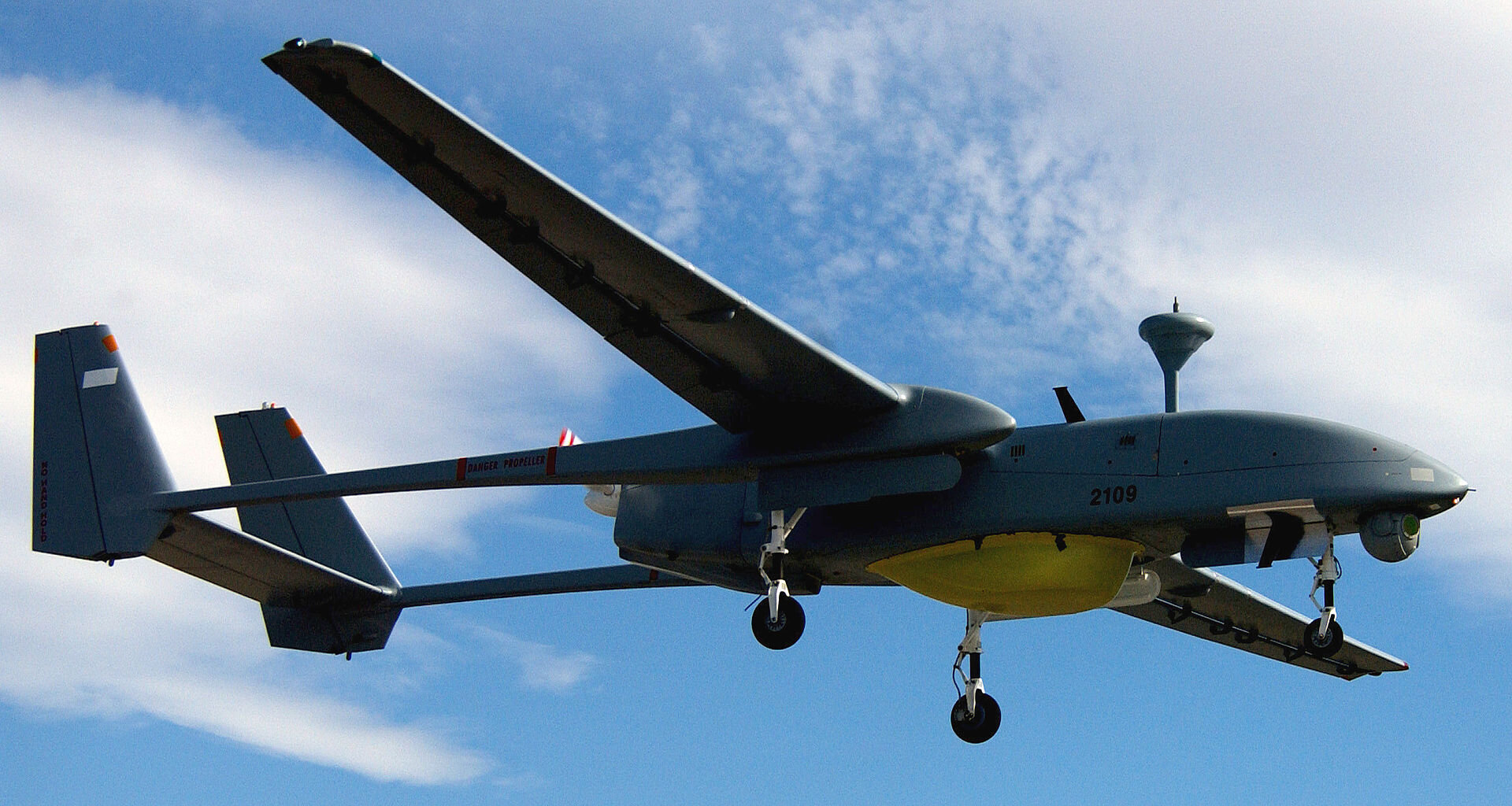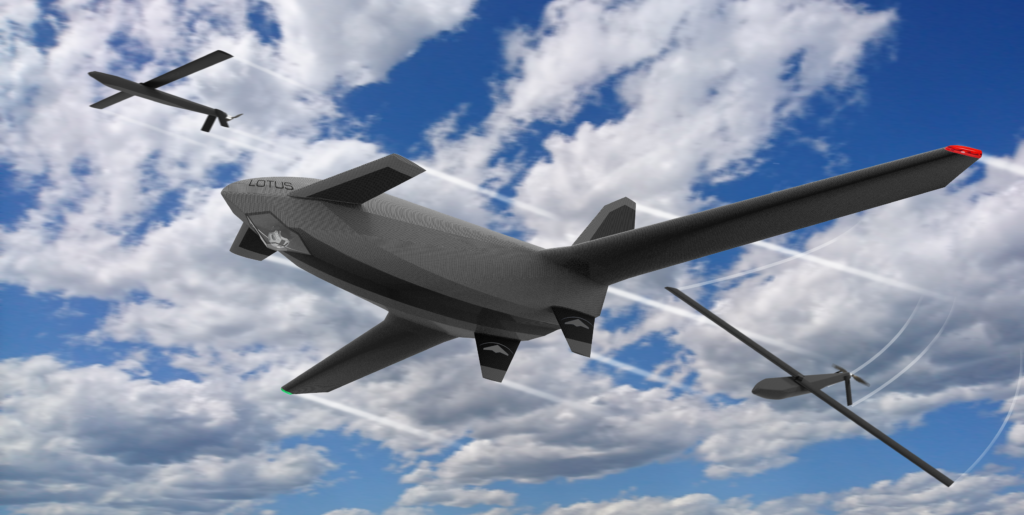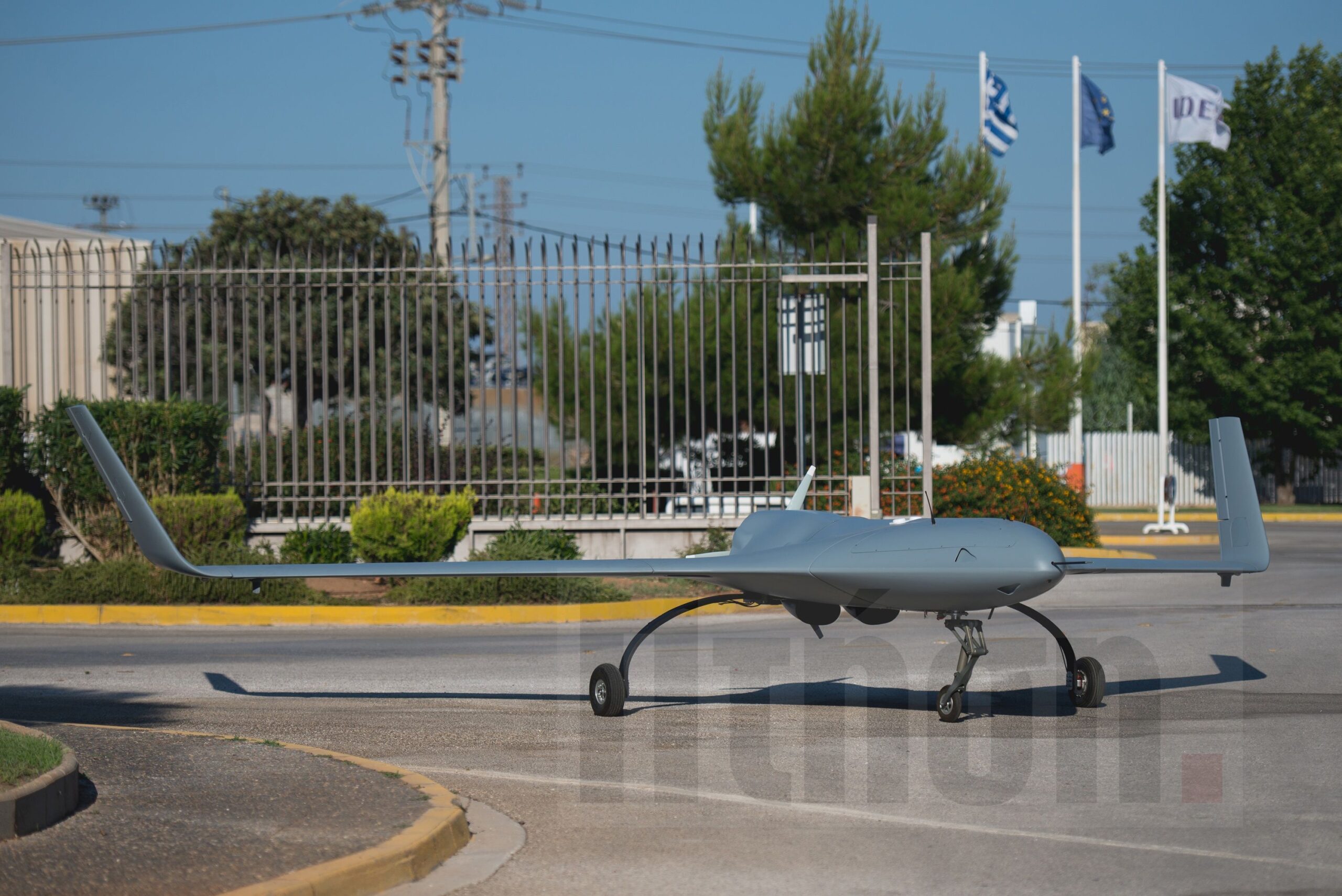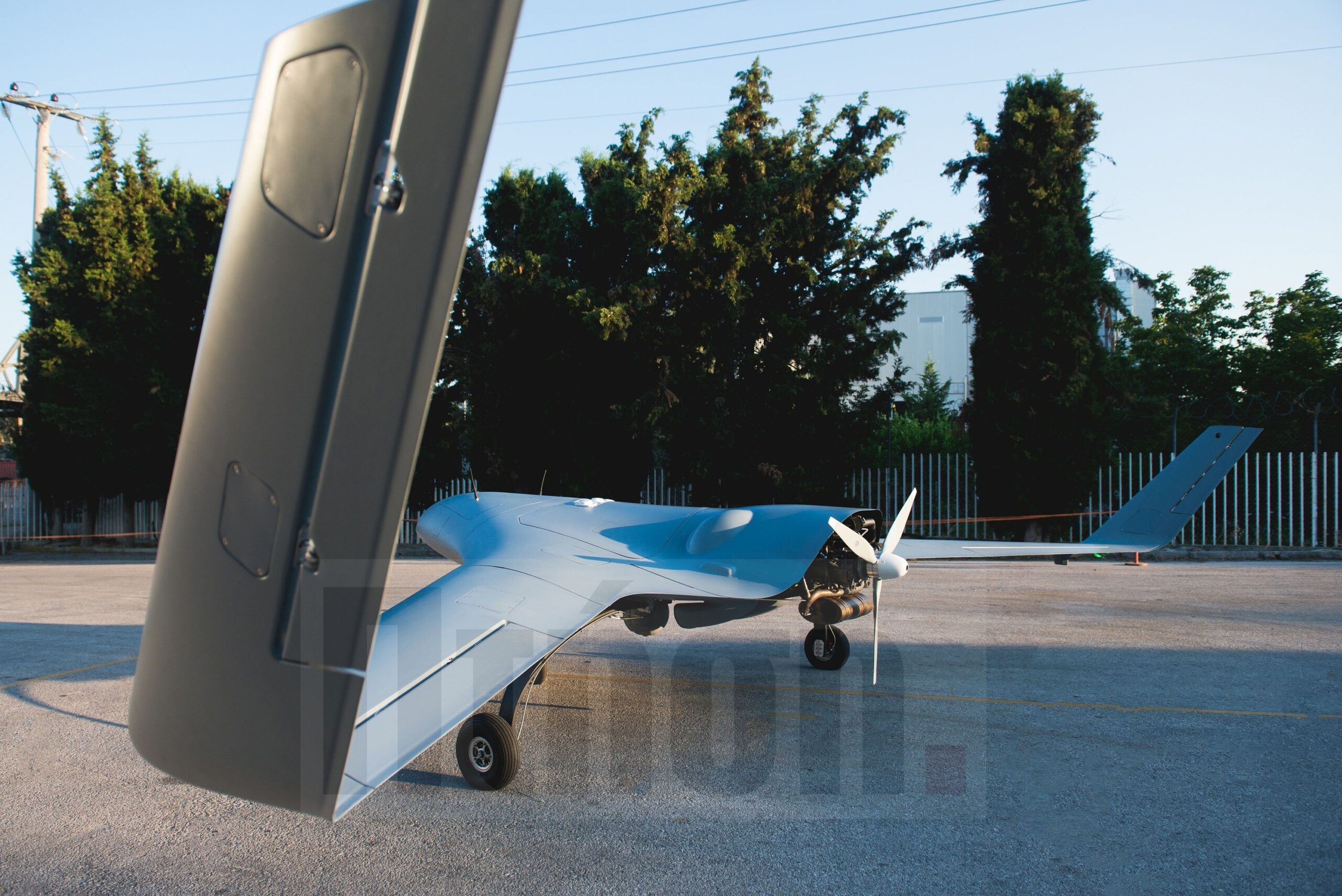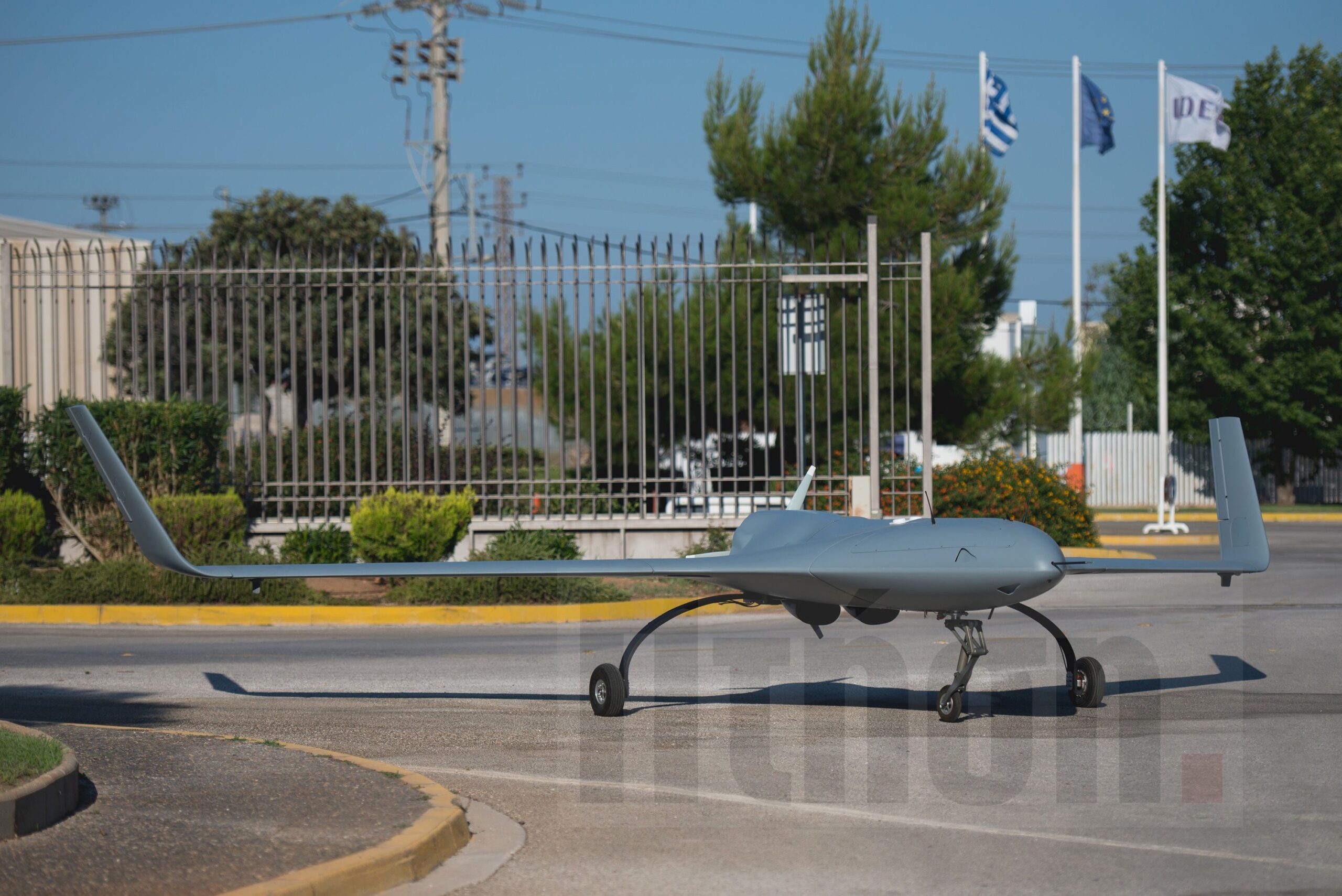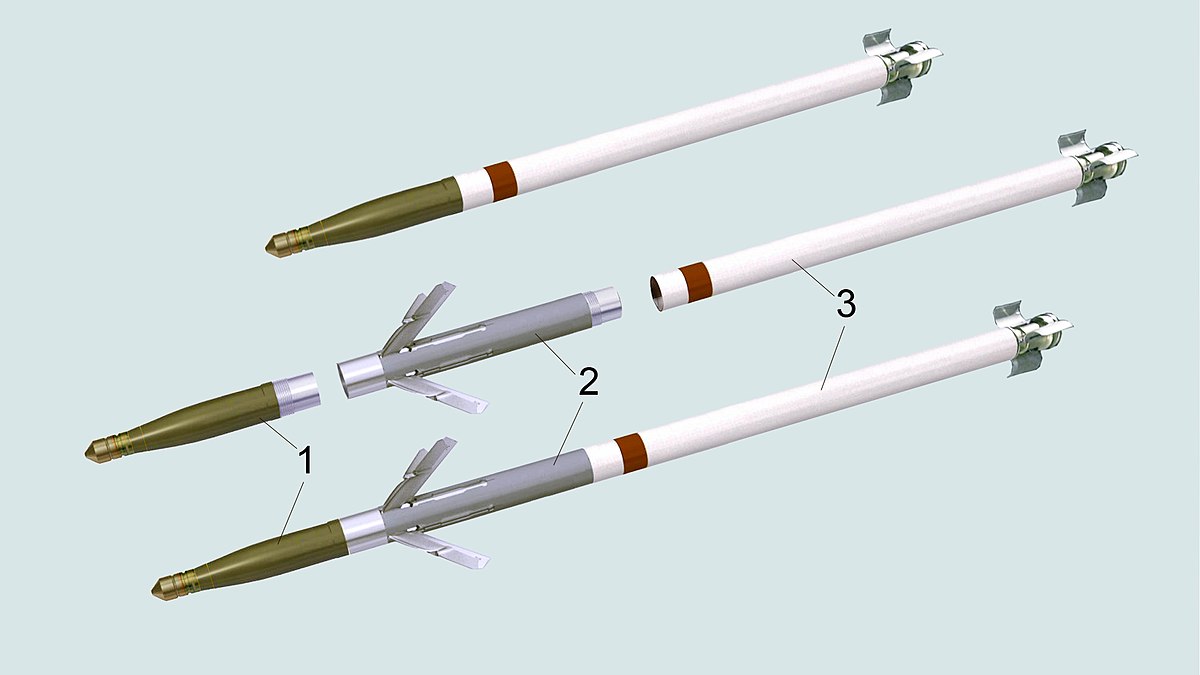Combat-Master
Baklava Consumer
DELAER-RX3
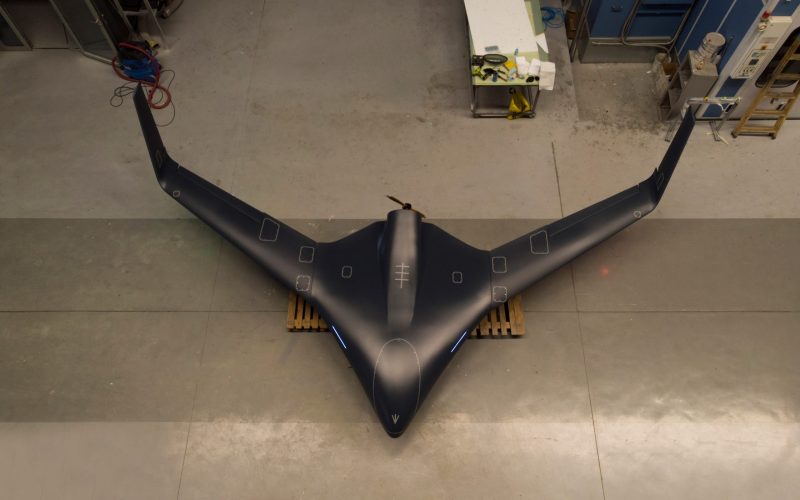

Objective and goals
The main goal of the DELAER research project objective is the design, development, manufacturing and flight testing of a prototype Unmanned Aerial Vehicle System (UAS), which will provide direct support to Greek isolated territories and islands, via aerial delivery of lifesaving supplies and dedicated equipment. The system will be based on a large-scale, autonomous, fixed-wing, novel Blended Wing Body (BWB) Unmanned Aerial Vehicle (UAV) configuration, as well as a portable ground control station (GCS).
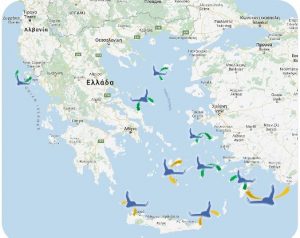
Mission
The DELAER RX-3 mission involves cruising to the point of interest for up to 65km, payload delivery, and cruising back to the base of operations.
Payload
RX-3 payload has been selected to support a wide range of humanitarian missions (life rafts, medical equipment, provisions etc.).
Aerodynamic Design
The DELAER RX-3 design was based on well-established aircraft design textbooks and methodologies. In-house sizing tools and routines were used to facilitate the layout, aerodynamics, and stability calculations. These tools were adjusted to the needs of UAVs and tuned to incorporate the unique characteristics of the novel BWB platform. They have also been validated through the design of the HCUAV RX-1, the first large-scale Hellenic Civil UAV for surveillance missions, which has successfully undergone several flight tests.
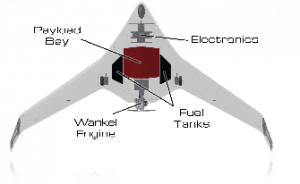
Computational analysis
The layout design and sizing procedure is compatible with FAA pt. 23 regulations and supported by high-fidelity aerodynamic analysis (CFD) and structural analysis (FEM) tools. The geometry used for the analyses was generated with the use of existing parametric 3D CAD tools, which allow the changes at the aerial vehicle configuration to be executed with speed and accuracy. The results were imported in a dedicated flight simulator software, for the evaluation of the key performance, aerodynamic and stability specifications of the RX-3.

Electronic systems
Both the RX-3 and the GCS will be equipped with state-of-the-art electronics and telecommunication systems, which will be developed in order to satisfy the operational requirements and will be capable of operating under adverse weather and environmental conditions. The aerial vehicle will communicate with the GCS through encrypted radiocommunications. A data gathering and management software will support the operations of the DELAER RX-3 system.
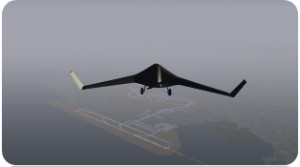
Construction
The manufacturing procedure of the RX-3 will comply with the latest machining and composite material fusion methods. Both the metal parts and the carbon fiber molds will be manufactured using state-of-the-art 5-axis CNC machines, to ensure an accurate representation of the complex 3D shape, as well as high surface quality. The final processing will be performed in a composite materials auto-clave, under strictly monitored temperature and pressure conditions, based on certified procedures.
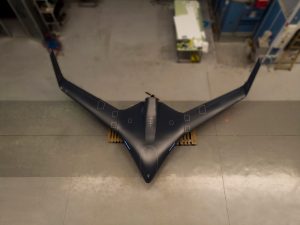
Features

(HCUAV) RX-1

 en.wikipedia.org
en.wikipedia.org
 lfmt.gr
lfmt.gr


Objective and goals
The main goal of the DELAER research project objective is the design, development, manufacturing and flight testing of a prototype Unmanned Aerial Vehicle System (UAS), which will provide direct support to Greek isolated territories and islands, via aerial delivery of lifesaving supplies and dedicated equipment. The system will be based on a large-scale, autonomous, fixed-wing, novel Blended Wing Body (BWB) Unmanned Aerial Vehicle (UAV) configuration, as well as a portable ground control station (GCS).

Mission
The DELAER RX-3 mission involves cruising to the point of interest for up to 65km, payload delivery, and cruising back to the base of operations.
Payload
RX-3 payload has been selected to support a wide range of humanitarian missions (life rafts, medical equipment, provisions etc.).
Aerodynamic Design
The DELAER RX-3 design was based on well-established aircraft design textbooks and methodologies. In-house sizing tools and routines were used to facilitate the layout, aerodynamics, and stability calculations. These tools were adjusted to the needs of UAVs and tuned to incorporate the unique characteristics of the novel BWB platform. They have also been validated through the design of the HCUAV RX-1, the first large-scale Hellenic Civil UAV for surveillance missions, which has successfully undergone several flight tests.

Computational analysis
The layout design and sizing procedure is compatible with FAA pt. 23 regulations and supported by high-fidelity aerodynamic analysis (CFD) and structural analysis (FEM) tools. The geometry used for the analyses was generated with the use of existing parametric 3D CAD tools, which allow the changes at the aerial vehicle configuration to be executed with speed and accuracy. The results were imported in a dedicated flight simulator software, for the evaluation of the key performance, aerodynamic and stability specifications of the RX-3.

Electronic systems
Both the RX-3 and the GCS will be equipped with state-of-the-art electronics and telecommunication systems, which will be developed in order to satisfy the operational requirements and will be capable of operating under adverse weather and environmental conditions. The aerial vehicle will communicate with the GCS through encrypted radiocommunications. A data gathering and management software will support the operations of the DELAER RX-3 system.

Construction
The manufacturing procedure of the RX-3 will comply with the latest machining and composite material fusion methods. Both the metal parts and the carbon fiber molds will be manufactured using state-of-the-art 5-axis CNC machines, to ensure an accurate representation of the complex 3D shape, as well as high surface quality. The final processing will be performed in a composite materials auto-clave, under strictly monitored temperature and pressure conditions, based on certified procedures.

Features

(HCUAV) RX-1

HCUAV - Wikipedia
DELAER-RX3 – LFMT
 lfmt.gr
lfmt.gr
Last edited by a moderator:






